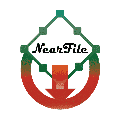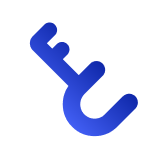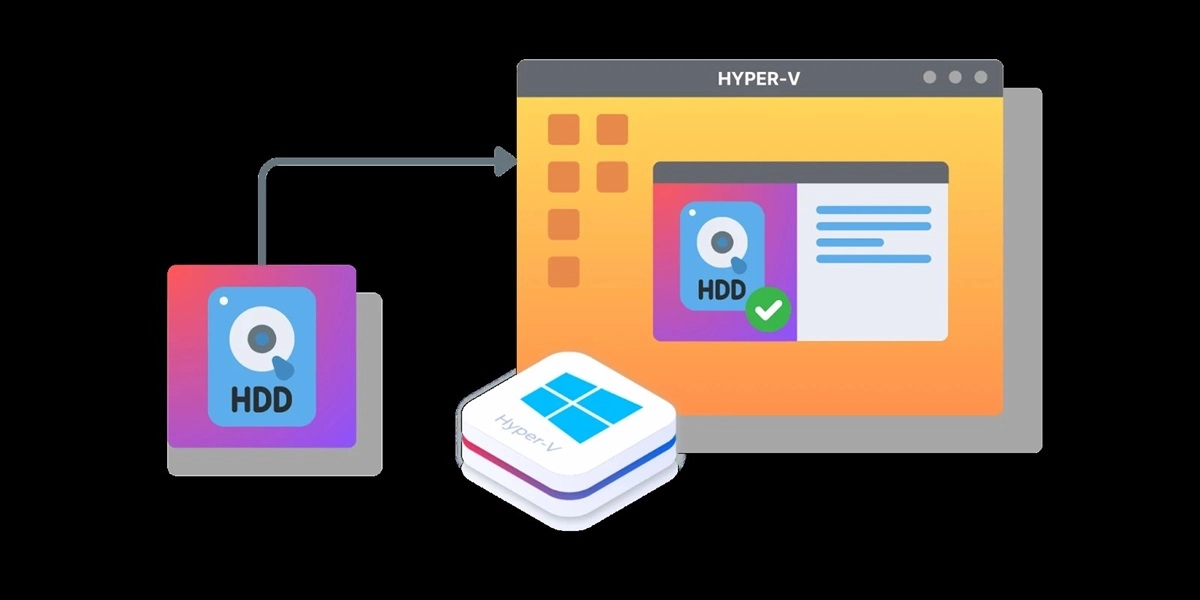PyCharm is an exceptional integrated development environment (IDE) specifically designed to cater to the needs of Python developers. Created by JetBrains, it offers a comprehensive set of tools and features that streamline the process of coding, debugging, testing, and deploying Python applications.
Table of Contents
Whether you’re a beginner exploring the world of Python or an experienced developer working on complex projects, it provides an intuitive and productive environment to bring your Python programming endeavors to new heights.
Main Features of PyCharm
Here are the key features of this application which will definitely help you reshape your mind about how you think about Python IDE-
Comprehensive Python Editor
PyCharm provides advanced code completion, syntax highlighting, and error highlighting to help catch and fix issues early on. With this app, you can perform PEP8 checks, testing assistance, smart refactorings, and a host of inspections.
Basically, the possibilities are limitless, and you unleash your true productivity potential with this application!
GUI Debugger
If you are already deep into the Python profile, then you know how great support a debugger can be! If you think you have messed up in some lines, the GUI debugger can easily find that for you and fix them. Even your code statistics don’t go unmissed. You can inspect and check everything thoroughly.
Virtual Environment Integration
PyCharm seamlessly integrates with version control systems like Git, allowing developers to perform versioning tasks, such as committing, branching, merging, and resolving conflicts, directly from the IDE.
Web Development Support
Do you use Django and Flask often? If that’s the case then you are going to hugely benefit from PyCharm. Because this software can complete the codes, help you with the template language and manage the deployment tools.
How to Download and Install PyCharm on Windows?
If you find yourself struggling with downloading and installing it, then here are the simple instructions to follow-
Step 1: Go to the download page for PyCharm on this website and click on the download button.
Step 2: Wait for the download to finish and then go to your file location and double-click on the executable file.
Step 3: Once the installation window has appeared, click next to continue.
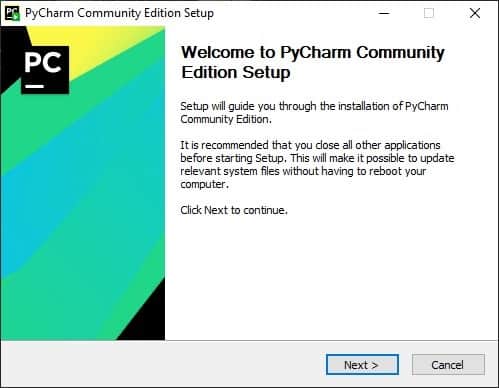
Step 4: Select the destination folder on your PC and press the next button.
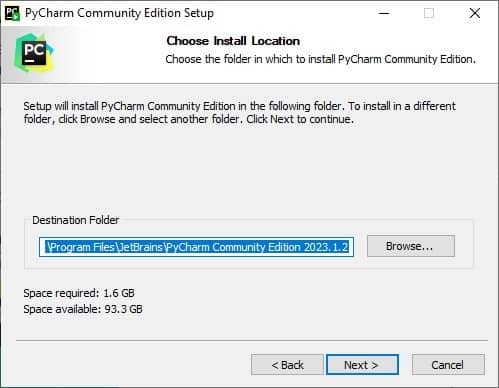
Step 5: Choose your preference in the installation options and press next again.

Step 6: Select a start menu folder and press install.
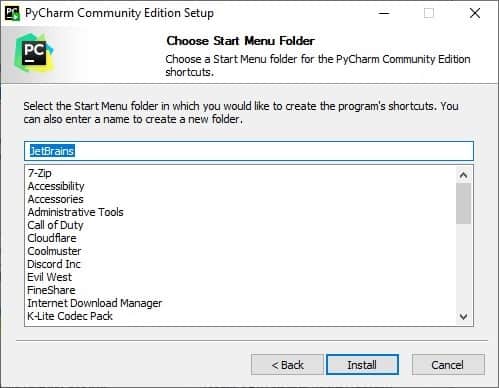
Step 7: Once the installation is done, you can now open the application to start your Python journey with PyCharm!
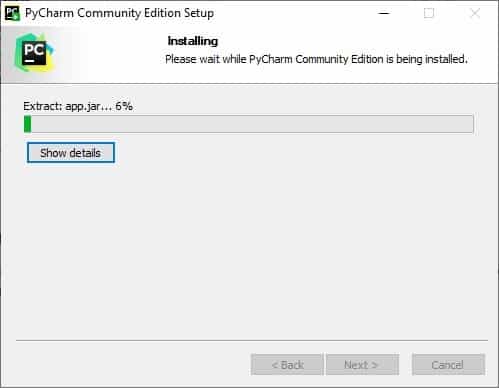
Getting Started with PyCharm
In 2023, PyCharm updated its UI with a beta version named PyCharm 2023.1. With the recently launched beta UI, you now can get more from your old PyCharm application.
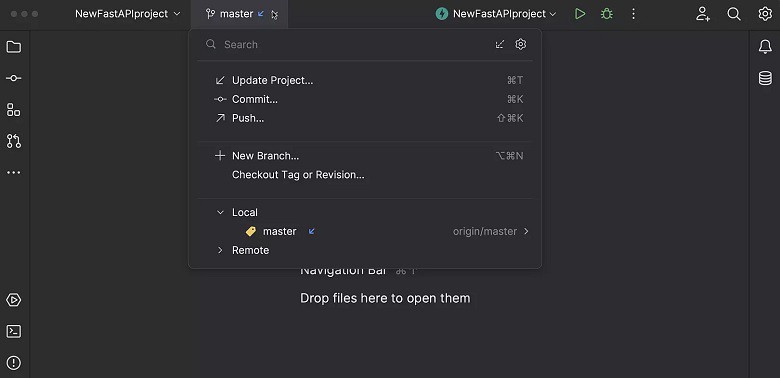
The window header has been completely redesigned to make your projects easier to access.
To create a new project in this app, you can go to the “File” menu and select “New Project.” Then, choose a location for your project, specify the interpreter (Python version), and select any desired project template or settings. Click “Create” to generate the project structure and start working on your code.
Then the tool window is now also more customizable and easier to navigate. Press the More tool windows icon to access more tool windows that are not currently on your screen.
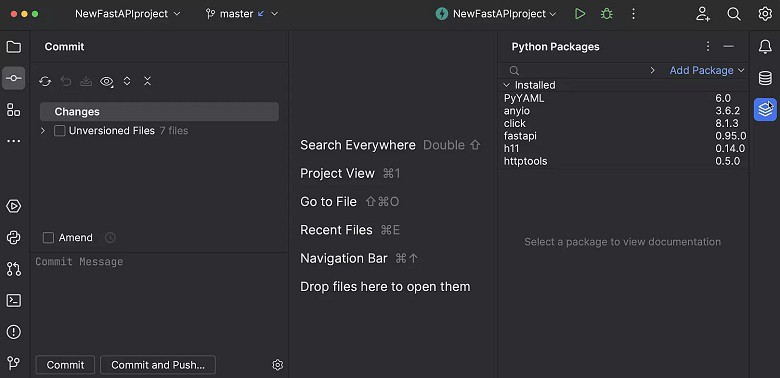
The new UI list goes on and on with a revamped Debug tool window, navigation bar and so much more. You just have to try it yourself to find out the exciting new changes PyCharm has brought.
Pros
- Brilliant Python editing
- Updated UI
- Easy to use
- Open-source and free to download
Cons
- Compared to other text editors, PyCharm requires more space
- The community version is only available for Python development
FAQs
Is it free?
Yes, the community version of it is completely free and open-source for everyone to use. However, if you want additional features and flexibility, then you can pay and use the professional version.
Does PyCharm support code refactoring?
It provides a wide range of code refactoring options, such as renaming variables, extracting methods, and introducing variables, allowing developers to improve the structure and maintainability of their Python code with ease.
How can I navigate between files and symbols in my code using PyCharm?
It provides various navigation features to help you move efficiently within your codebase. You can use shortcuts like Ctrl+Click to jump to definitions, Alt+Left/Right to navigate back and forth, and the “Find Symbol” functionality to search for specific classes, functions, or variables.
Conclusion
Long story short, if you are using Python regularly, then PyCharm can increase your productivity by a large margin without any doubt. Being a professional developer, it’s hard to acknowledge that it is probably THE Python IDE you will ever need.
So, get yourself the community edition now and get on to developing complex codes with ease!


